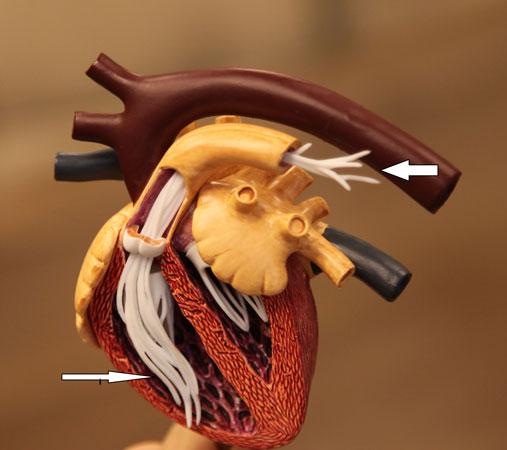
Heartworm Disease Prevention
Tuesday, April 11, 2017
April is National Heartworm Awareness Month. What is heartworm disease and what pets does it affect?
The American Heartworm Society’s website provides owners with a wealth of information on the subject. Here are the basics for pet owners.
Heartworm disease is a serious and potentially fatal disease in pets. It is caused by foot-long worms (heartworms) that live in the heart, lungs, and associated blood vessels of affected pets.
It causes severe lung disease, heart failure and damage to other organs in the body.
Heartworm disease affects dogs, cats and ferrets. However, heartworms can also live in other mammal species including wolves, coyotes, foxes, sea lions and – in rare instances – humans.
Because wild species such as foxes and coyotes live in proximity to many urban areas, they are considered important carriers of the disease.
The dog is the natural host for heartworms. Heartworms that live inside the dog mature into adults, mate and produce offspring. If untreated, dogs have been known to harbor several hundred worms in their bodies.
Heartworm disease causes lasting damage to the heart, lungs and arteries and can affect the dog’s health and quality of life long after the parasites are gone. Prevention is the best option. When needed, treatment should be administered as early as possible in the course of the disease.
Heartworm disease is very different in cats than in dogs. Most worms in cats do not survive to the adult stage.
Cats typically have one to three worms. While this means heartworm disease often goes undiagnosed in cats, it is important to understand that even immature worms cause real damage in the form of a condition known as heartworm associated respiratory disease.
Moreover, the medication used to treat heartworm infections in dogs cannot be used in cats. Prevention is the only means of protecting cats from the effects of heartworm disease. Cat monthly heartworm preventives are available in both spot-on and pill form.
The mosquito plays an essential role in the transmission of heartworm disease from one pet to another.
When the mosquito takes a blood meal from an infected animal, it picks up the baby worms or microfilariae. When that mosquito then bites another animal, the infective larvae are deposited onto the surface of the animal’s skin and enter the new host through the mosquito’s bite wound.
Once inside the new host, the larvae mature. Mature heartworms can live for five to seven years in dogs and up to two or three years in cats. Because of the longevity of these worms, each mosquito season can increase the number of worms in an infected pet.
Signs of heartworm disease in dogs may include a persistent cough, reluctance to exercise, fatigue after moderate activity, decreased appetite and weight loss.
Signs of the disease in cats can be very subtle or very dramatic. Symptoms may include coughing, asthma-like attacks, periodic vomiting, lack of appetite or weight loss.
Heartworm disease has been diagnosed in all 50 states. Risk factors are impossible to predict and can vary from year to year. And because infected mosquitos can come inside, both outdoor and indoor pets are at risk.
The American Heartworm Society recommends that pet owners “think 12.” Get your pet tested every 12 months for heartworm and give your pet heartworm prevention 12 months a year. Consult your veterinarian to determine the best heartworm preventives for your pet.
In the above photo, adult heartworms are shown within the heart of a dog.
by Elisabeth Giedt, DVM
Veterinary Viewpoints is provided by the faculty of the OSU Veterinary Medical Hospital. Certified by the American Animal Hospital Association, the hospital is open to the public providing routine and specialized care for all species and 24-hour emergency care, 365 days a year.
